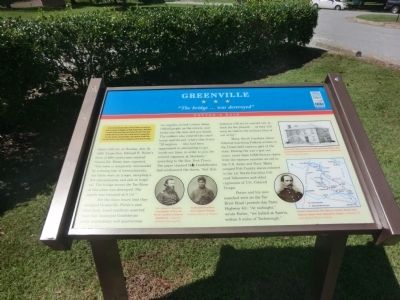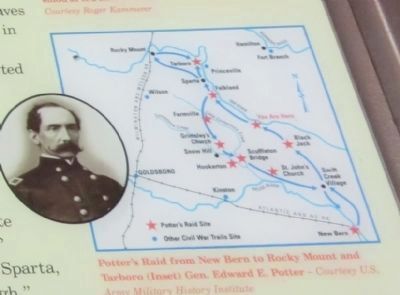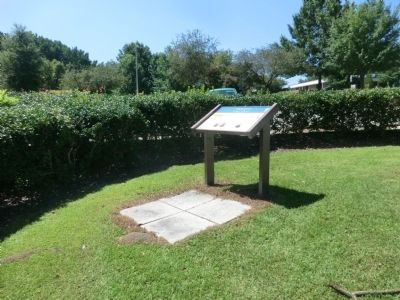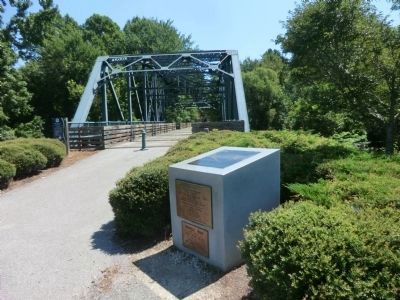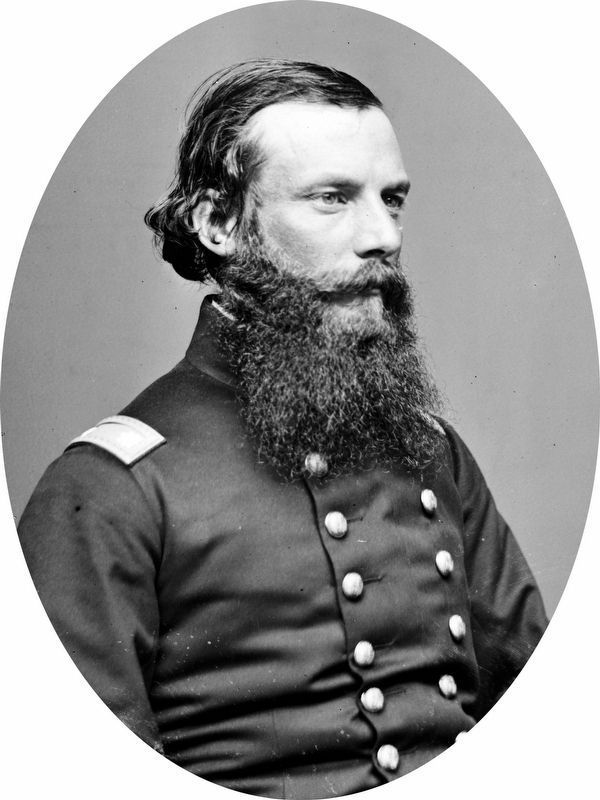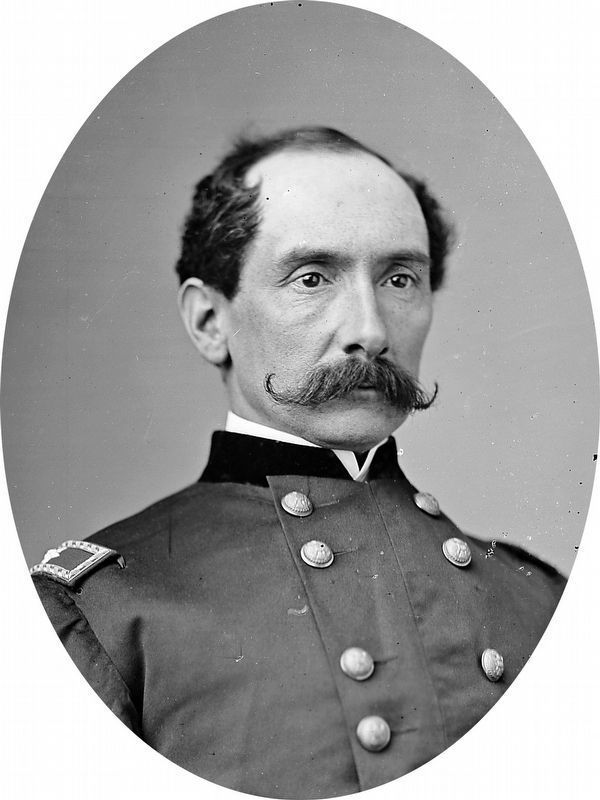Greenville in Pitt County, North Carolina — The American South (South Atlantic)
Greenville
"The bridge...was destroyed"
— Potter's Raid —
On July 18, 1863, Union Gen. Edward E. Potter led infantry and cavalry from New Bern to destroy the Wilmington and Weldon Railroad bridge at Rocky Mount. The infantry feinted toward Kinston and returned to New Bern. Potter raided Greenville, then sent part of his cavalry to Rocky Mount and occupied Tarboro. The raiders damaged or destroyed bridges, trains, munitions, and mills before returning to New Bern on July 23, but the Confederates restored rail service by Aug. 1.
(main text)
About 3:00 P.M. on Sunday, July 19, 1863, Union Gen. Edward E. Potter’s force of 800 cavalrymen entered Greenville. Potter later reported, “The town is completely surrounded by a strong line of intrenchments, but there were no troops, excepting a few convalescents and sick in hospital. The bridge across the Tar River at this place was destroyed. The march was resumed at 6 p.m.”
For the three hours that they occupied Greenville, Potter’s men were busy. Local residents asserted that they destroyed Confederate army commissary and quartermaster supplies, looted civilian shops, robbed people on the streets, and broke into the bars and got drunk. The soldiers also entered the courthouse and the jail, where they freed “25 negroes …who had been imprisoned in attempting to get inside our lines, in order to join the colored regiment at Newbern,” according to the New York Times. The paper claimed that Confederates had condemned the slaves, “but that sentence will not be carried out; at least for the present …as they will soon be clad in the military blue of our army.”
Many North Carolina slaves followed marching Federal armies to the Union-held eastern part of the state. During the war’s last two years, more than 5,000 former slaves from the eastern counties served in the U.S. Army and Navy. Many escaped Pitt County slaves enlisted in the 1st North Carolina Colored Volunteers and other regiments of U.S. Colored Troops.
Potter and his men marched west on the Tar River Road (present-day State Highway 43). “At midnight,” wrote Potter, “we halted at Sparta, within 8 miles of Tarborough.”
(captions)
(lower center) Col. James C. Beecher, commander of the 1st North Carolina Colored Volunteers.- Courtesy Historical Data Systems; Unidentified soldier, U.S. Colored Troops Courtesy Library of Congress
(upper right) Greenville Jail, constructed 1855 and demolished 1882, stood at 3rd and Evans Sts. across from the courthouse. Courtesy Roger Kammerer
(lower right) Potter's Raid from new Bern to Rocky mount and Tarboro (Inset) Gen. Edward E. Potter - Courtesy
U.S. Army Military History Institute
Erected by North Carolina Civil War Trails.
Topics and series. This historical marker is listed in these topic lists: African Americans • War, US Civil. In addition, it is included in the North Carolina Civil War Trails series list. A significant historical month for this entry is July 1893.
Location. 35° 36.9′ N, 77° 22.098′ W. Marker is in Greenville, North Carolina, in Pitt County. Marker can be reached from the intersection of East 1st Street and North Side Street, on the left when traveling east. The marker is located in Town Common Park. Touch for map. Marker is in this post office area: Greenville NC 27858, United States of America. Touch for directions.
Other nearby markers. At least 8 other markers are within walking distance of this marker. Pitt County Supreme Sacrifice and Veterans Memorial (approx. 0.2 miles away); Early Black Health Professionals (approx. ¼ mile away); Sycamore Hill Missionary Baptist Church (approx. 0.3 miles away); United in Faith (approx. 0.3 miles away); a different marker also named Sycamore Hill Missionary Baptist Church (approx. 0.3 miles away); Neighborhood Unity and Community Pride (approx. 0.3 miles away); Town Common & Urban Renewal (approx. 0.3 miles away); Sycamore Hill Gateway Plaza (approx. 0.3 miles away). Touch for a list and map of all markers in Greenville.
Credits. This page was last revised on December 2, 2020. It was originally submitted on September 4, 2014, by Don Morfe of Baltimore, Maryland. This page has been viewed 893 times since then and 34 times this year. Photos: 1, 2, 3, 4. submitted on September 4, 2014, by Don Morfe of Baltimore, Maryland. 5, 6. submitted on December 1, 2020, by Allen C. Browne of Silver Spring, Maryland. • Bernard Fisher was the editor who published this page.
